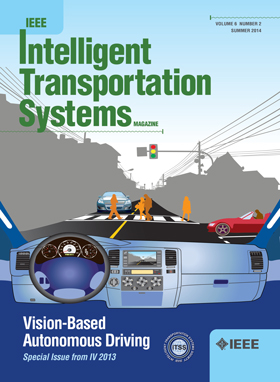Lane Change Prediction for Autonomous Driving With Transferred Trajectory Interaction
IF 7.9
1区 工程技术
Q1 ENGINEERING, CIVIL
IEEE Transactions on Intelligent Transportation Systems
Pub Date : 2025-02-25
DOI:10.1109/TITS.2025.3542517
引用次数: 0
Abstract
In mixed-autonomy traffic environments, accurately predicting the lane change behavior of human-driven vehicles is critical for ensuring the safety and reliability of autonomous vehicle decision-making. However, existing approaches face two major challenges: 1) they tend to represent the relationships between the target vehicle and surrounding vehicles using parameters like relative position and speed. This approach either requires a fixed number of surrounding vehicles or introduces significant noise by relying on virtual vehicles; and 2) they often fail to fully exploit the vast amount of available vehicle trajectory data, leaving the complexities of vehicular interactions underexplored. To address these issues, this paper presents a novel lane change prediction framework using Transformer-based transfer learning. Our design aims to leverage inter-vehicle interactions learned from trajectory data to improve lane-change prediction accuracy. Specifically, pre-trained trajectory prediction models are used to adapt dynamically to the varying number of surrounding vehicles and to capture interaction context from large sets of trajectory data. We then refine the Transformer model to integrate this context and predict the target vehicle’s lane change intentions. The Transformer encoder transforms trajectory interaction context into a lane-change-oriented context using aggregated multi-head attention. The Transformer decoder, in turn, utilizes this context alongside the target vehicle’s states through relation-aware multi-head attention to forecast lane change behavior. Extensive experiments on two real-world datasets demonstrate that our proposed framework outperforms state-of-the-art baselines in both accuracy and robustness.具有传递轨迹相互作用的自动驾驶变道预测
在混合自主交通环境下,准确预测人类驾驶车辆的变道行为对于确保自动驾驶车辆决策的安全性和可靠性至关重要。然而,现有的方法面临两个主要挑战:1)它们倾向于使用相对位置和速度等参数来表示目标车辆与周围车辆之间的关系。这种方法要么需要固定数量的周围车辆,要么依靠虚拟车辆引入明显的噪音;2)它们往往无法充分利用大量可用的车辆轨迹数据,导致车辆相互作用的复杂性未得到充分探索。为了解决这些问题,本文提出了一种基于transformer的迁移学习的车道变化预测框架。我们的设计旨在利用从轨迹数据中学习到的车辆间相互作用来提高变道预测的准确性。具体来说,使用预训练的轨迹预测模型来动态适应周围车辆数量的变化,并从大量轨迹数据中捕获交互上下文。然后,我们对Transformer模型进行改进,以集成该上下文并预测目标车辆的变道意图。Transformer编码器使用聚合的多头注意将轨迹交互上下文转换为面向车道变化的上下文。反过来,Transformer解码器通过关系感知的多头关注来利用此上下文和目标车辆的状态来预测变道行为。在两个真实数据集上进行的大量实验表明,我们提出的框架在准确性和鲁棒性方面都优于最先进的基线。
本文章由计算机程序翻译,如有差异,请以英文原文为准。
求助全文
约1分钟内获得全文
求助全文
来源期刊

IEEE Transactions on Intelligent Transportation Systems
工程技术-工程:电子与电气
CiteScore
14.80
自引率
12.90%
发文量
1872
审稿时长
7.5 months
期刊介绍:
The theoretical, experimental and operational aspects of electrical and electronics engineering and information technologies as applied to Intelligent Transportation Systems (ITS). Intelligent Transportation Systems are defined as those systems utilizing synergistic technologies and systems engineering concepts to develop and improve transportation systems of all kinds. The scope of this interdisciplinary activity includes the promotion, consolidation and coordination of ITS technical activities among IEEE entities, and providing a focus for cooperative activities, both internally and externally.
 求助内容:
求助内容: 应助结果提醒方式:
应助结果提醒方式:


